Delicately positioning cutouts suspended on equally fragile pins, the artist’s solo exhibition Hither and Yon presents work that studies remnants of popular culture like rare specimens. The work also answers the question, “what happens when an artist and an actuary become friends?”
A. Moret interviews the artist at Scott White Contemporary Art. David Adey’s solo exhibition will be on view through February 15, 2014.
Installation Magazine: Has the construction of Life Clock changed your relationship to time?
David Adey: Growing up as an “art kid” I never took Physics in high school and I never took advanced math because I was terrible at math at an early age. My math teachers gave up on me and I find it so unfortunate because I am fascinated by math, I go back to it all the time. Even the pieces in this exhibition, the unfolding of the body is all about Geometry and how things come together. Time is a relative concept, and with Omega Man I was thinking about a trillion. After researching the number I realized that one trillion seconds is 31,688 years and this fact blew me away. I thought a trillion seconds was about a month or so. I had no concept of what a trillion actually was. Then I started thinking about what was happening 32,000 years ago. At that time the last known Neanderthals were walking around the plains of Europe and Homo sapiens were on the rise. We are talking about the dawn of civilization. Life Clock is about biometrics and follows in the same trajectory as Omega Man, which is the first timer that I created. For this piece I actually collaborated with an actuary named Jeremy Clear. We have 19 data points ranging from family history, personal health, to gender and lifestyle. All factors that actually affect mortality. Using peer-reviewed research we have developed a clock that calculates life expectancy to the second.
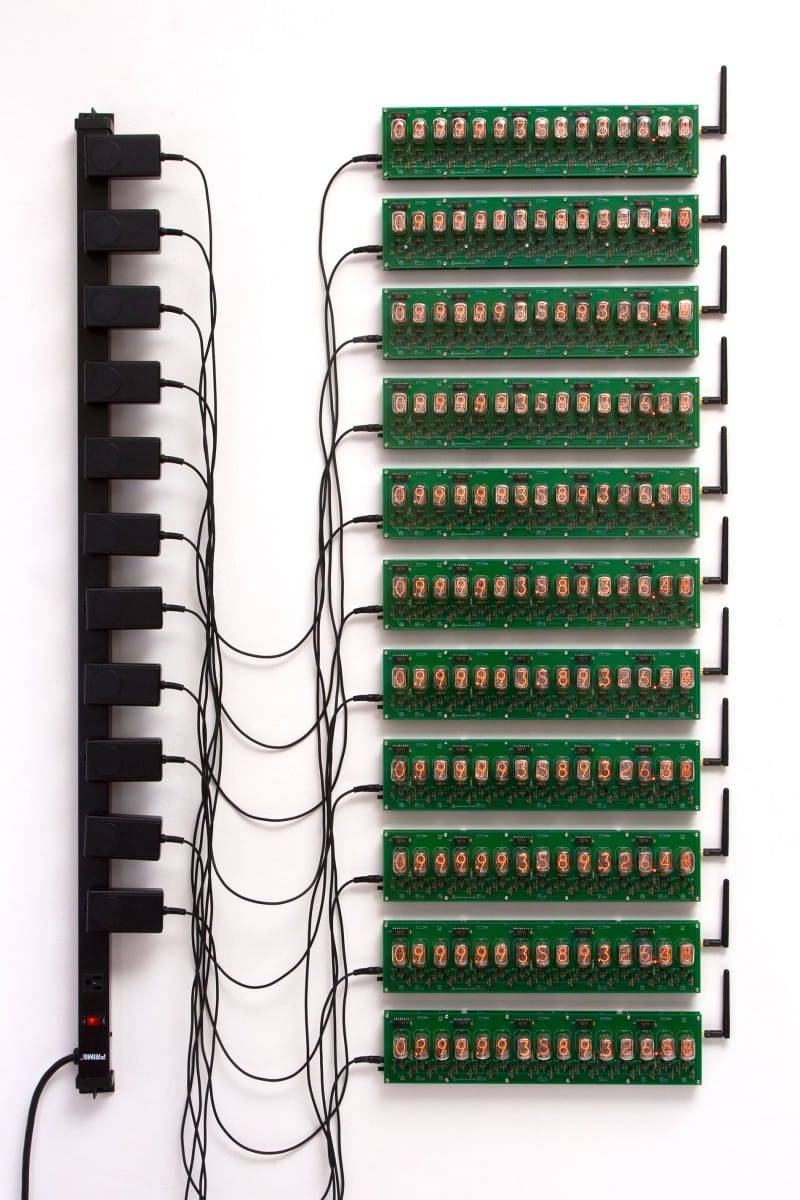
Life Clock is a visualization of your life expectancy?
Yes. The clock is programmed with my time of birth, 10:47am on August 3, 1972, which is the starting point of the clock. Right now my life expectancy is 86 years old but what is interesting about Life Clock is that it’s programmable, so you can play with the calculator to change your data. It adds or takes time from your life according to new data. For instance, if you are a smoker and you quit or if you lose weight you can adjust the calculator. Hundredths of a second fly off and it gives you a sense of urgency. There are 1,276,343,629 seconds left in my life and it is constantly counting. Basically, the clock represents life slipping away. Omega Man and Life Clock have GPS receivers that keep them constantly updated to the current time. If you take the battery out of the clocks, put them in a box for five years and then turn them on again, the receiver will pick up the satellite signal and continue right where it left off. Life Clock is a personal doomsday clock.
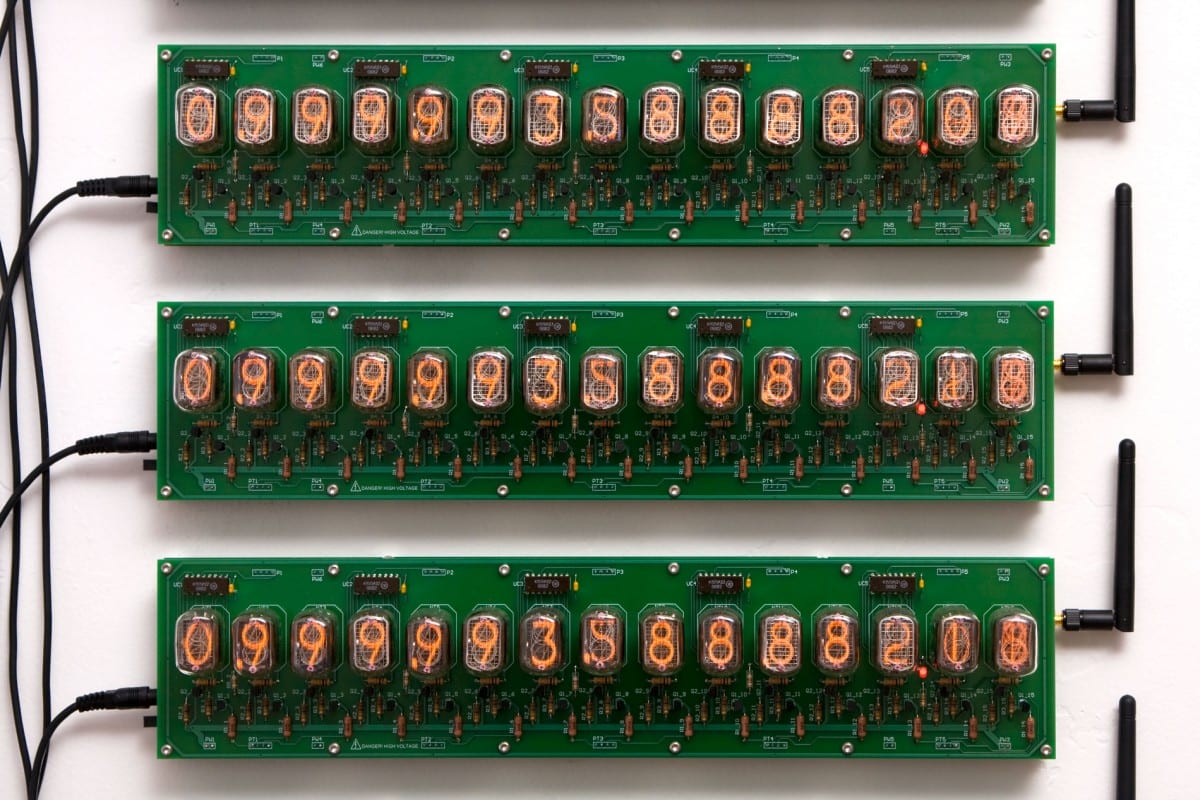
View the complete video
The construction of both Omega Man and Life Clock share many aesthetic similarities. What informed the design of Omega Man?
I used nixie tubes, which are like a filament but they are actually filled with neon gas. They are pre-segmented LED displays which was the standard technology before the classic alarm clock. It references the Cold War era. It’s like a doomsday clock that is projecting itself into the future. That is why I made 12, I think about it as an existentialist statement. Artists to one degree or another hope to make something that outlasts themselves, they hope to create something that people in the future will appreciate and accept.
We often think of an artwork as a reflection of the collector. Life Clock puts a new spin on this concept. Does a collector input their own data?
The clock is designed so when a collector buys it, the work will be programmed to reflect their life expectancy. It will be programmed with their statistics and their life history.
I think Life Clock is my attempt, a futile attempt to project myself 32,000 years into the future. I’m hoping that this clock will still be around then. When I started the countdown on July 1 at midnight of 2012, I decided that that moment was the peak of civilization and now we’re on this decline. It’s arbitrarily chosen so it’s also referencing the prophetic preachers that spoke about the end of the world. I am making the statement that one trillion seconds from now the world as we know it will end. It’s something that cannot be verified because it’s 32,000 years in the future; I am dealing with a prophetic and existential statement of attempting to project myself into the future.
When you look at the Life Clock, it seems like a lot of time is represented. But if you actually consider that the clock represents a finite period of time, it can be overwhelming. I wonder if we are counting something that we shouldn’t be counting in the first place?
The clock could also gives you a false sense of hope because although it projects a number, I could walk across the street and get hit by a car tomorrow. One of the factors that we’re trying to add in is risk assessment. This work is what happens when an actuary and artist become friends… It’s been a challenging but fun piece to work on.

The work Gravitational Radius is like a constellation of limbs that appear to be moving in a cyclonic motion. What does the work explore?
It’s a parody of “star,” a pop star, a cultural idea juxtaposed with astrophysical language. Every quantity of matter has a gravitational radius. If you were to compress any matter, removing all of the space between the subatomic particles, you would get a perfectly condensed body of matter. The gravitational radius of Earth is about the size of a marble and if it were to be compressed slightly beyond that point the gravitational pull would be so great that light wouldn’t be able to escape, which is the definition of a black hole, the point of no return. I wanted to illustrate compression rather than explosion because these bodies are compressing in the center. I also reference the sexualization of women’s bodies in popular culture, which is something that I have been dealing with as a heterosexual male and as a graphic designer working on a lot of advertising campaigns. After my daughter was born, I started to see things with a new set of eyes. I want her to grow up with a self-image that is not only based on her looks. I worry that the media is programming her at such a young age.
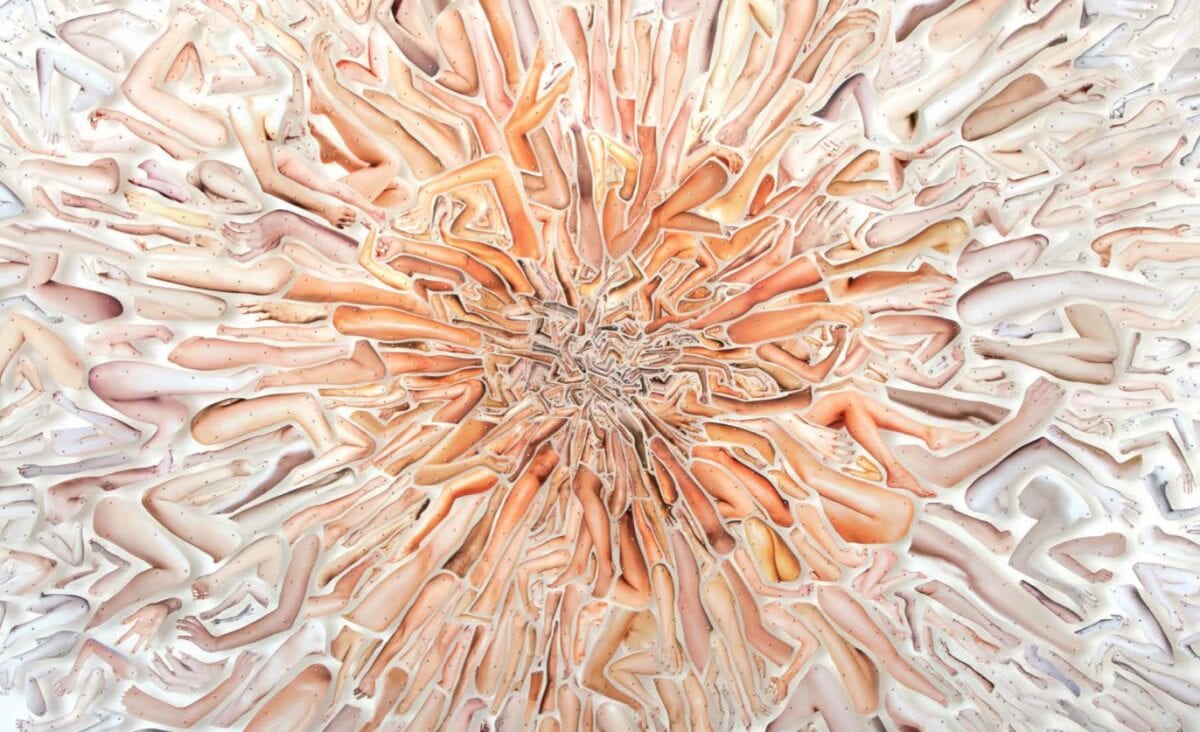
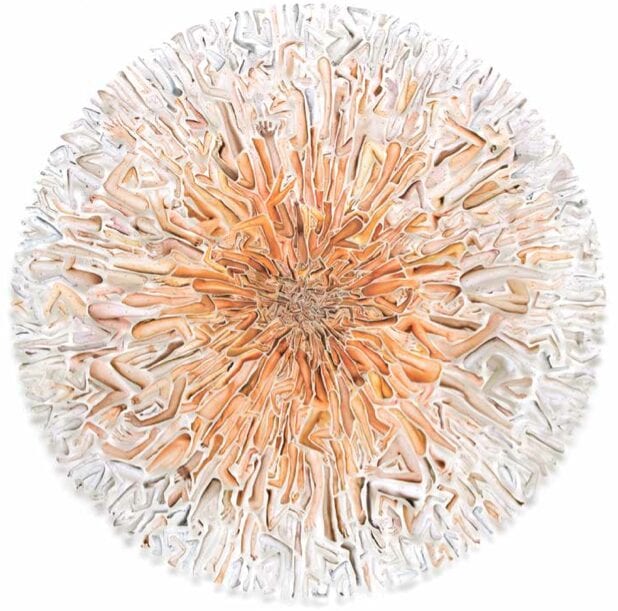
The sheer scale of Hide demonstrates an acute attention to detail and painstaking accuracy. It presents a vision of the body that is abstracted and reconstructed through a digital lens.
I’m uncomfortable with the idea of Hide as a self-portrait. My hope is that it doesn’t become a narcissistic self-portrait but that it reads as a statement about the human body. I have unlimited access to my own body, free of copyright so it was easiest to use my body for the piece. Genetically speaking, all humans are nearly identical so it’s really all about the commonality. If I used someone else’s body, the work would become more about my relationship with them, and the question of “why did you choose that person?” would be raised. My body seemed more neutral and universal.
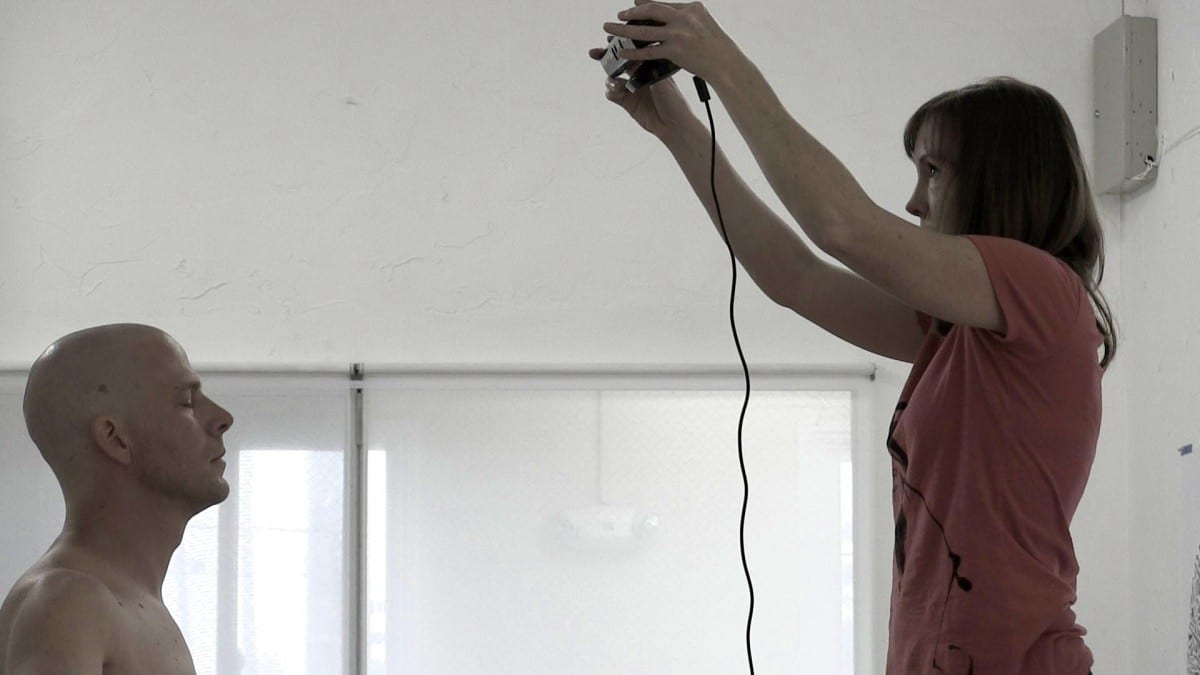




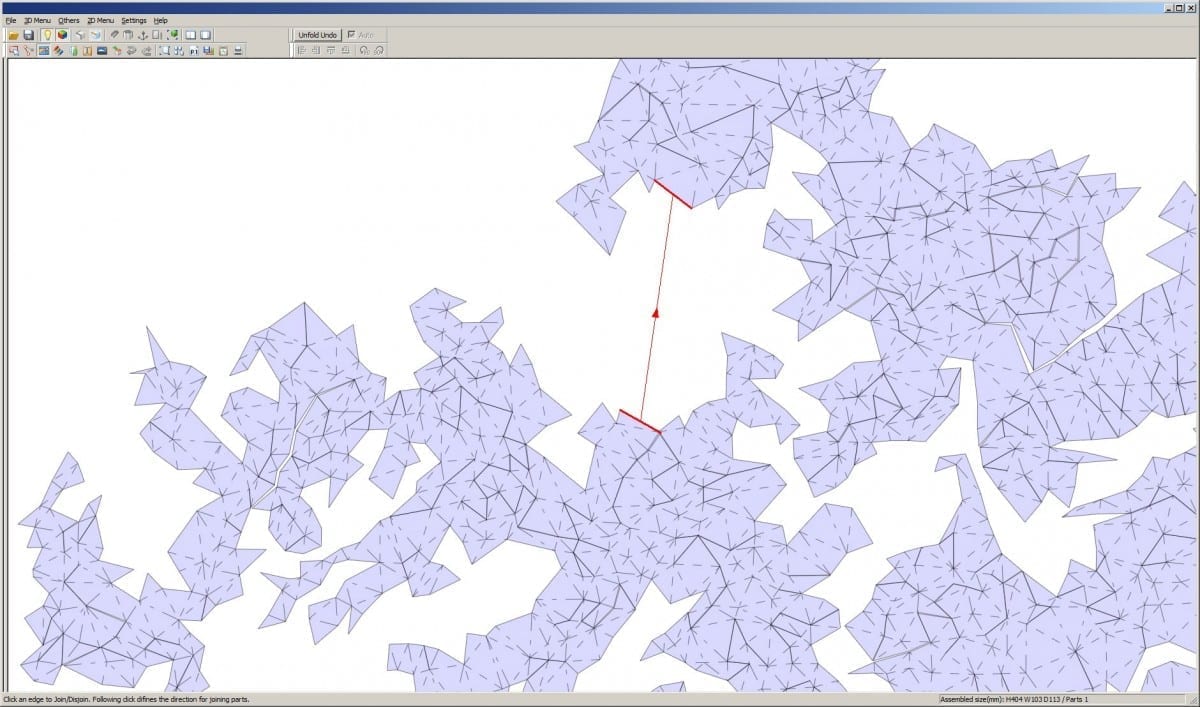
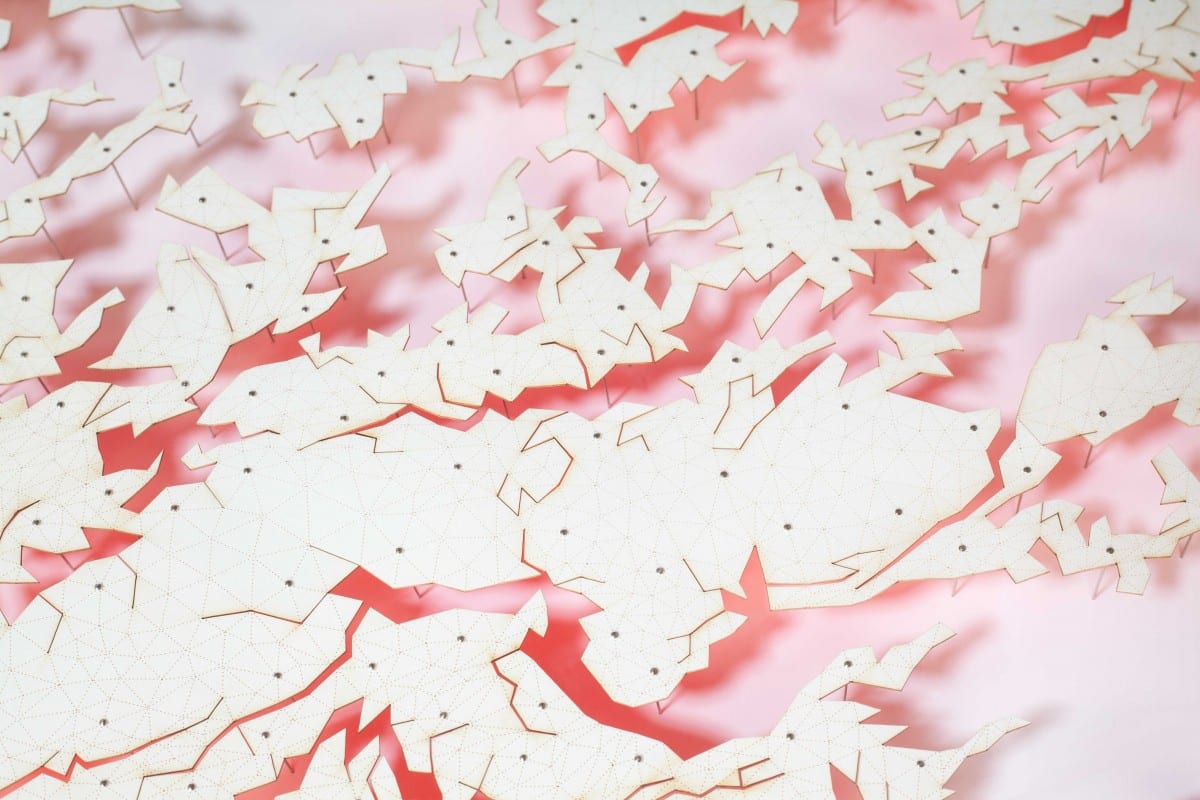
This five-month project is like a 75,000 piece puzzle that you have to take apart instead of put together. I’m very much informed by Pop Art, Minimalism and Conceptualism. That’s what I love. The content and the aesthetic are Minimalist; they are indistinguishable from each other, whereas in Conceptualism the image and concept are separated. I am informed by Conceptualism in that the aesthetic is the output of the process. The aesthetic element is very important to me. I try to keep it very clean and to not bring in too many arbitrary decisions, I focus on the process. There is a false, general assumption that if the aesthetic of the work is seductive it must be lacking in content. I strive for the two to become indistinguishable.
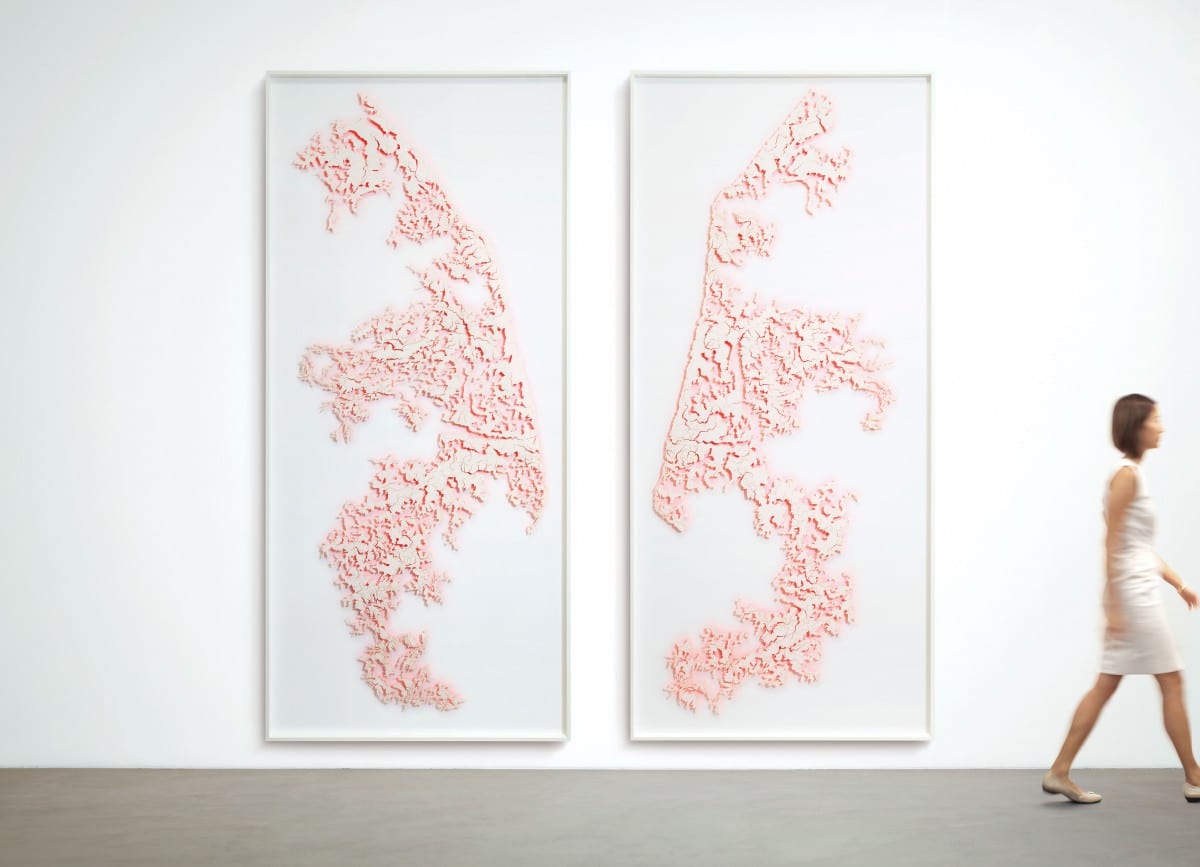
View the process
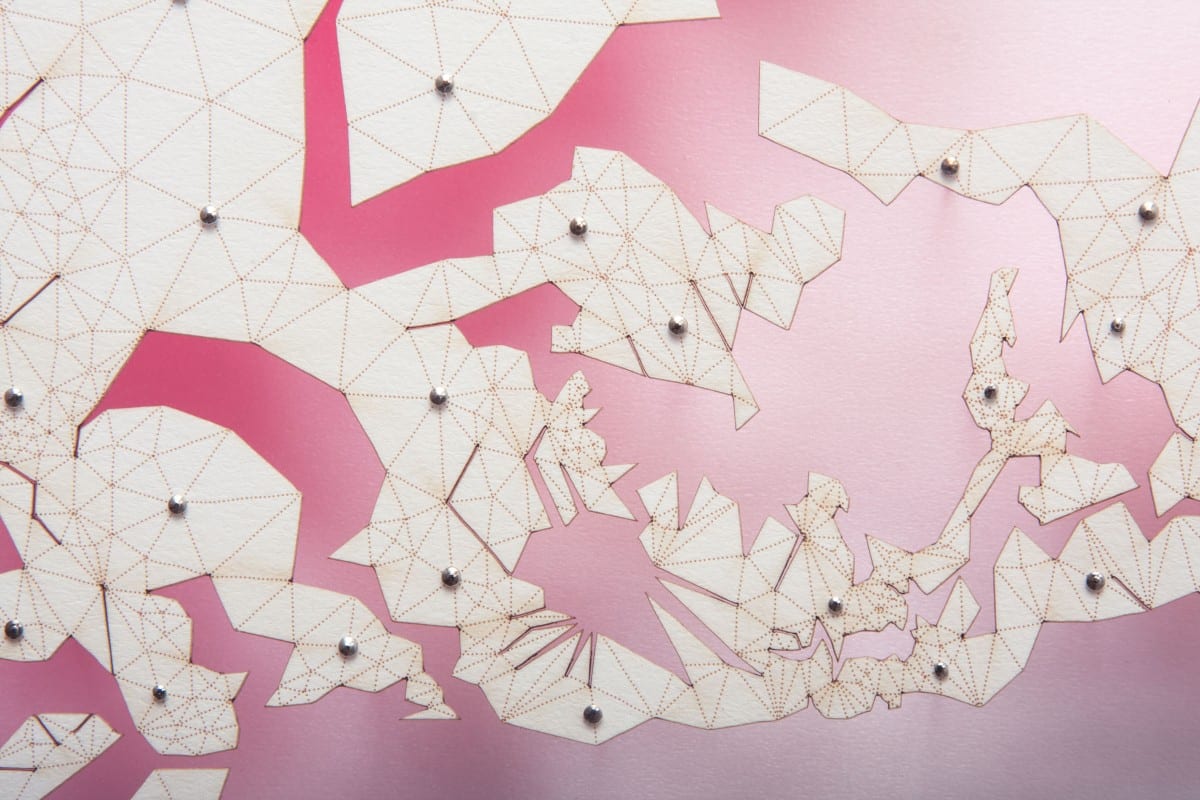
Your anatomical structure resembles early geographical references such as Pangaea and plate tectonics and the shifting of landmasses. How has this changed the way you think about the human form and objects in space? You’re constrained to this surface. Do you hope to return to a sculpture in the round at some point?
Well, not necessarily. I want to scan more things and flatten them. I’m interested in the transformation that occurs when something three-dimensional becomes two-dimensional. The information gets lost. It’s dealing with the ubiquitous nature of the two-dimensional image that we are bombarded with on a constant basis.
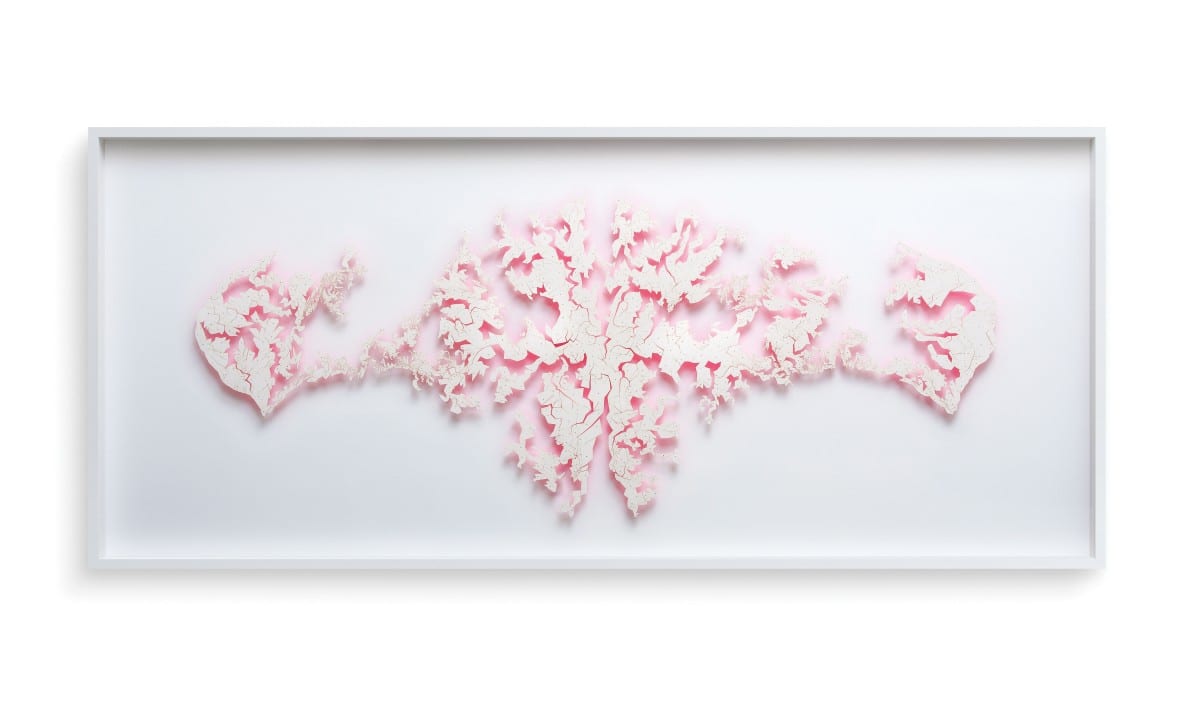
To that point our perception has changed. We relate to an object as something that is both flat and manipulated but also has a referent in physical space and time.
The complex geometry of my whole head is present yet it’s so abstracted that it becomes something unrecognizable. This piece is more than just a two-dimensional image where all that information is lost. You can argue that Halo and Hide are more complete self-portraits.
It’s as if we have a map that guides us into the mysteries of creativity, no matter how abstract the presentation.
Halo and Hide were inspired by Buckminster Fuller, who is best known for the geodesic dome with triangles. Before that he created the “Dymaxion Map,” the first ever flattened map of the globe where the landmasses were not distorted. It was all triangulated, showing that the major landmasses are almost all one big island. Fuller presented a completely different point of view. I think that in essence the flattening of the human form reveals more mysteries. It’s actually a very simple move. I think there is an elegance in the efficiency of this concept.
Featured video: Art by Constraint Trailer ©Dale Schierholt and Scott White Contemporary Art
Featured image: David Adey, Omega Man (Trillion Second Countdown) (detail), Russian-suplus nixie tubes, GPS receivers, custom electronics, 2.5″ x 9.125″, 2013
All images © of the artist and Scott White Contemporary Art
